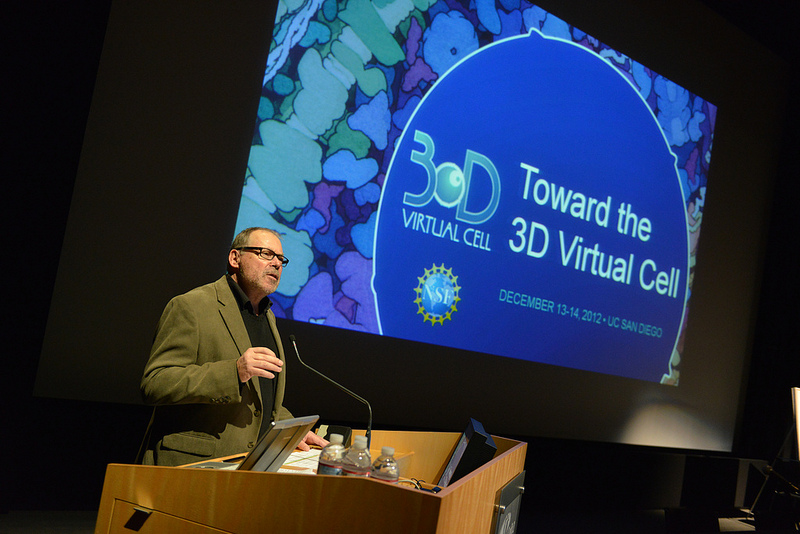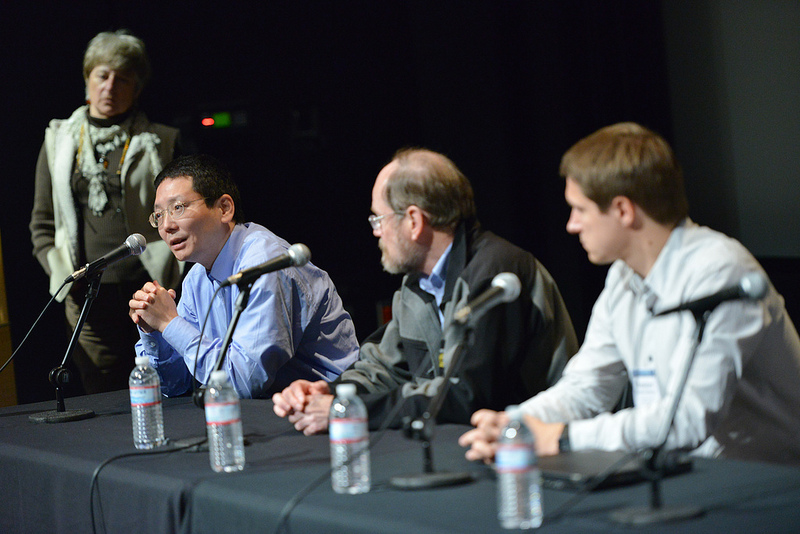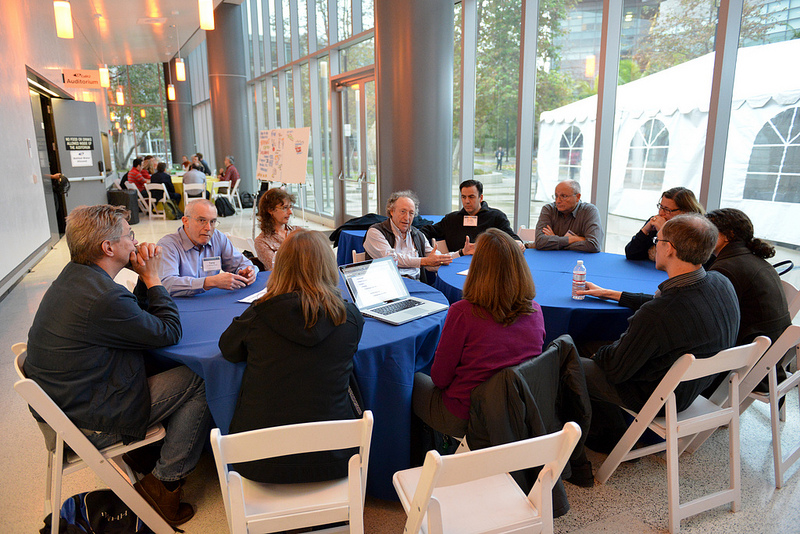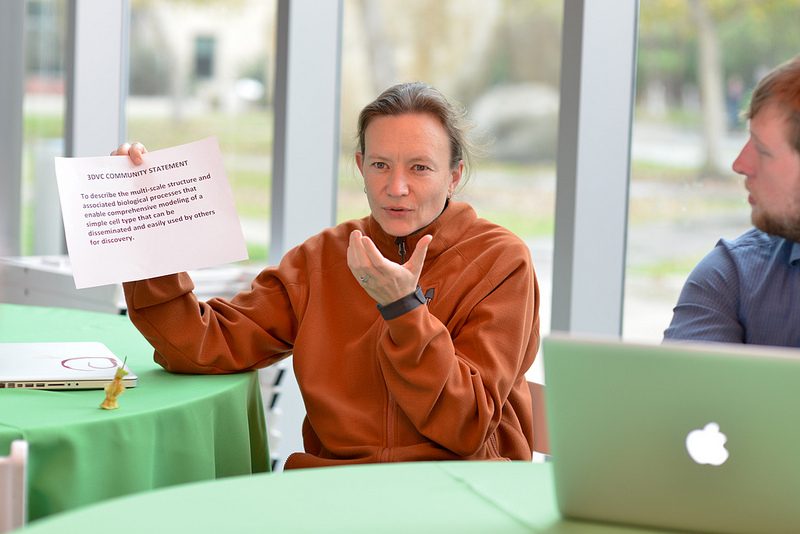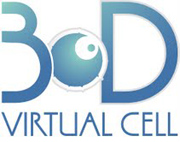Community Embraces Effort to Build 3D Virtual Cell
December Conference Highlights Potential for Cloud-based Collaborative Research
San Diego, Dec. 21, 2012 -- Scientists from the University of California, San Diego, national and international research centers launched a first-of-its-kind workshop series intended to bring together investigators from a wide range of scientific fields to develop a 3D Virtual Cell. Funding for the Dec. 13-14 conference was provided by the National Science Foundation (NSF).
|
“The 3D Virtual Cell represents a new place to go for scholarship that is broader than what we as scientists are accustomed to,” said UC San Diego professor of pharmacology Philip Bourne, who leads the university’s effort and chaired the “Toward a 3D Virtual Cell” conference. “A major goal of this event is to ask researchers from across the scientific community what needs and resources they think will drive the study of molecular and cellular biology in the coming years. We expect that the 3D Virtual Cell will play a major role in that discussion going forward.”
|
As noted at the conference, the cloud-based 3D Virtual Cell is intended to serve as a “go-to” place for creating and sharing data capable of structurally describing very simple cells. Early project functionality is likely to include an online portal linking various cell biology associations and related collaborative groups, with an emphasis on expanding upon existing data about the design and biological processes of cells.
Future undertakings are expected to include the development of software aimed at shaping the research environment, in which the 3D Virtual Cell would exist as an open access-type central repository of molecular and cellular biology data. A key characteristic of this model is that it would be reciprocal in nature, with members of the scientific community not only accessing data from the repository, but also contributing sharable simulations and methodologies. Multiple conference attendees and speakers remarked that a 3D Virtual Cell resource based on this model could serve as a sort of “app store” similar to the ones used by Apple and Android for the distribution of online content and applications.
|
This preliminary model of the 3D Virtual Cell was discussed in-depth by approximately 150 conference attendees, including nearly 50 presenters. Speakers presented brief, TED-style talks followed by panel discussions on such diverse topics as whole-cell modeling, visualization, cellular behavior, and educational outreach. Additional activities included workgroup sessions devoted to outlining project goals, promoting interdisciplinary use of the 3D Virtual Cell, and negotiating a “middle ground” between the use of physical and virtual cell models.
|
“This project relies heavily on the expertise and input of the scientific community,” observed UC San Diego’s Bourne. “Having attendees vote on and attend specific discussions through this ‘open spaces’ format allowed everyone from students to senior faculty to have a say about what they felt was most critical to developing the 3D Virtual Cell.”
|
At present, a major obstacle to the expansion of such collaboratories is the lack of an accepted scientific ontology associated with how scientific data should be accessed and disseminated among researchers, as noted by conference speaker Maryann Martone, UC San Diego professor in residence of neuroscience and director of the Calit2-based Neuroscience Information Framework. “The 3D Virtual Cell could help create a semantic structure for life-sciences researchers to use when describing molecular and cellular biology, and its use would greatly increase access to scientific findings,” said Martone. “This project can help the research community take a global view on data, which will likely lead to the generation and sharing of data in novel ways that we have yet to anticipate.”
With this project, UC San Diego’s Bourne seeks to create a community-driven resource that transforms how science is conducted, noting that there is a clear need for the proposed 3D Virtual Cell. “This is the right time for such an effort, and the UCSD and Torrey Pines Mesa scientific community is the right place to do this,” said Bourne. “This event has demonstrated that there is a shared euphoria about this project. Now we must take steps to ensure that we provide researchers with the tools they need to actively participate in this rapidly evolving resource.”
Additional workshops aimed at moving the 3D Virtual Cell project closer to reality and toward participation in the NSF’s S2I2 program are being planned for the coming year.
Related Links
Media Contacts
Doug Ramsey, 619-379-2912, dramsey@ucsd.edu

